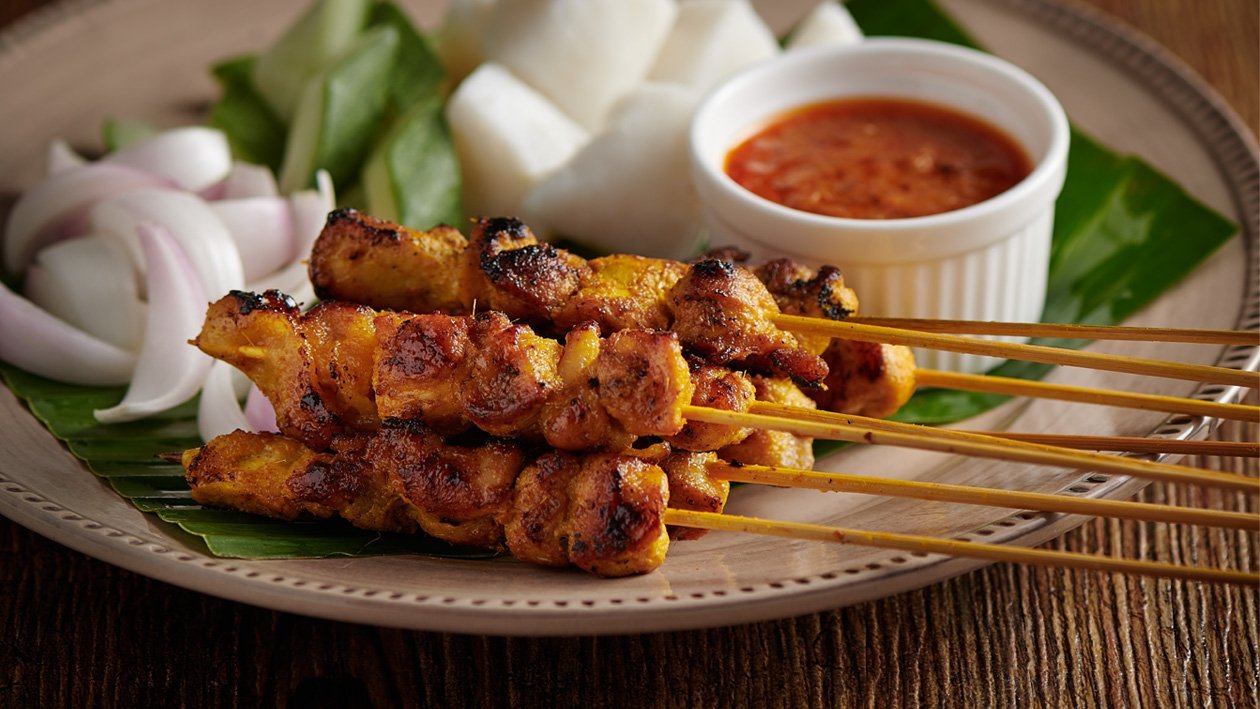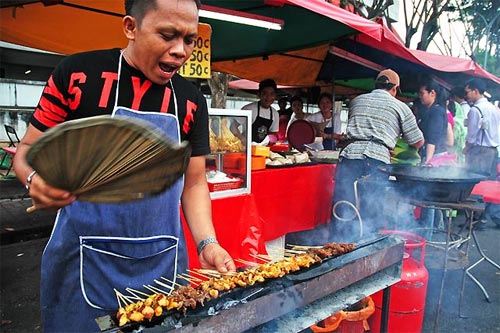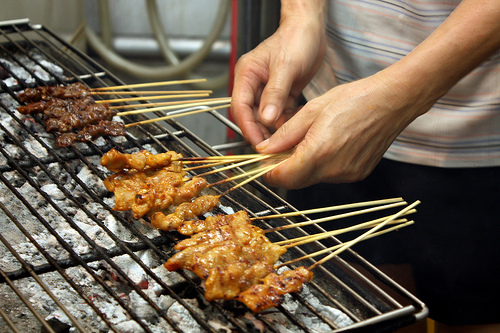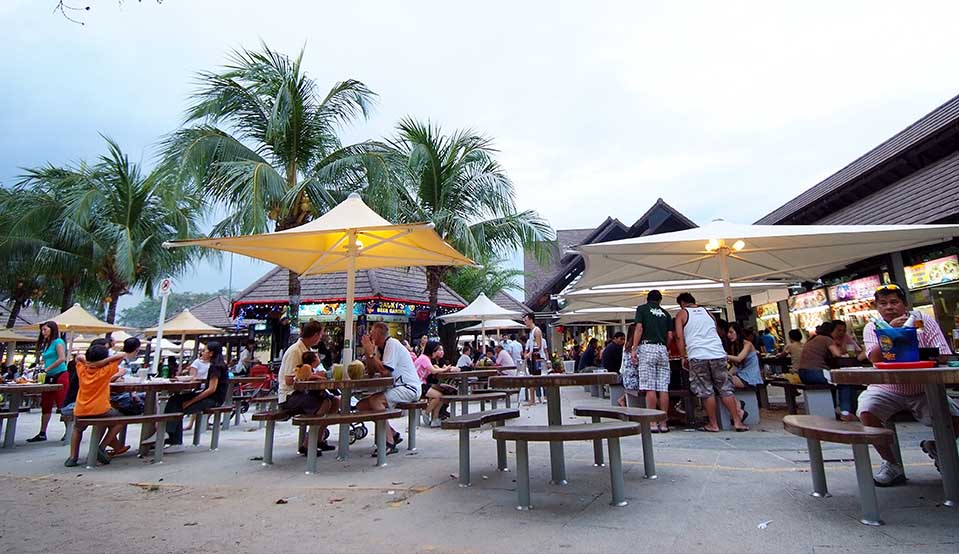Basque cuisine is an exploration of just how far wood, smoke and flame can be taken as a cooking technique when it’s expertly harnessed and applied to the finest ingredients.
Asador Etxebarri is almost too perfect. Even to those who have dined there, the restaurant occupies something of a mythical place in the mind’s eye. Was it real? Does it actually exist?
The setting seems improbably flawless: Axpe, a tiny Basque village surrounded by green pastures and rugged, mist-shrouded mountains. The restaurant in an old stone farmhouse by a church where bells peal, tendrils of smoke wafting from chimneys into cold air.
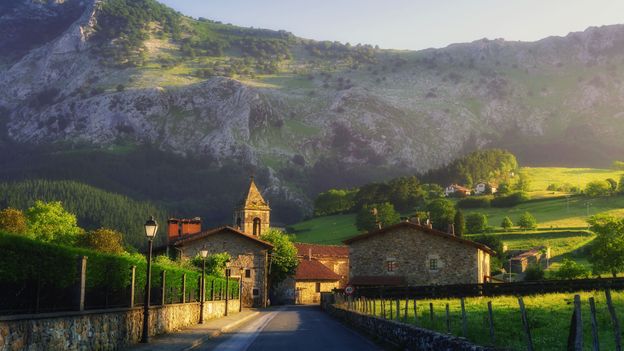
The tiny Basque village of Axpe is the unlikely setting for one of the best restaurants in the world
And the food. A meal at Etxebarri is a fire-powered tour de force, an exploration of just how far simple wood and smoke and flame can be taken as a cooking technique when they’re expertly harnessed and applied to the finest ingredients.
You expect to be served a txuleta at Etxebarri: the rib-eye or sirloin steak, grilled over coals and served rare on the bone, that’s so classic as to be a Basque obsession. But what about the caviar, tiny orbs of black roe warmed high above the embers? Or the burrata made by hand every morning, the buffalo milk gently smoked in a wood oven? Or the blushing scarlet prawns, cooked whole, the heat of the fire steaming the sweet meat in its shell?
Self-taught chef Bittor Arguinzoniz tinkers away in his rural hideout, taking a centuries-old gastronomic tradition – the Basque art of the “asador”, the wood-fired grill – and pushing it to an astonishing new level. This is a cuisine Arguinzoniz has made his own, a style of cooking that defines Etxebarri and now, indeed, the entire Basque Country of northern Spain.
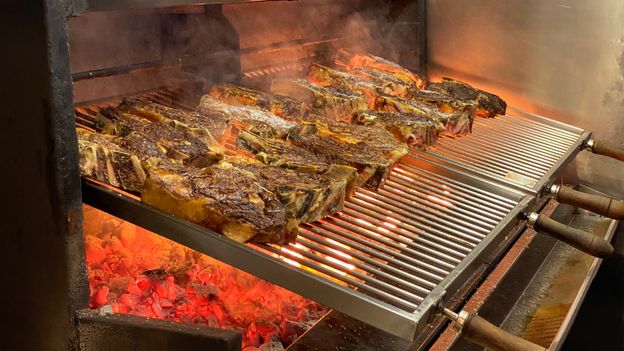
It’s also, however, a cuisine of deep tradition, a culture of cooking with fire that stretches back millennia and that still thrives in every corner of this autonomous and culturally independent land. The influence of the grill masters is evident everywhere you look in the Basque Country: in the charred txuletas served in raucous cider houses; in the hake and turbot seared over hot coals at the coastal eateries overlooking the Bay of Biscay; in the flame-kissed staples that appear on menus everywhere from the most upmarket restaurants to the cheapest tapas-like pintxos bars in culinary hotspots such as San Sebastian and Bilbao.
“We are just the hand that carries the produce from the countryside, the garden or the fish market to the table,” said Arguinzoniz, the undisputed master of the parrilla, the grill, and a man of modest understatement. “There is nothing to hide behind with this style of cooking. It has the capacity to surprise you using the simplest ingredients. It can make you fall in love with Basque cuisine, with its local ingredients harvested from this very soil, ingredients that have been used throughout the course of history. It has particular significance right here. It would be difficult, if not impossible, to export, because outside of the Basque Country this significance gets lost.”
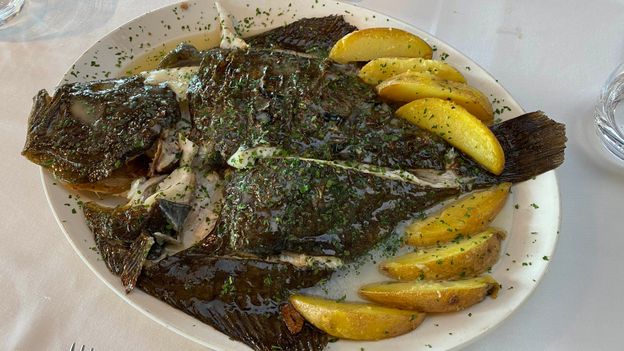
Fire. Passion. There’s an indelible link between the two, and that’s certainly evident in the Basque asadores. These grill houses are everything that makes this beautiful land and its people special: the wood the cooks burn is from the Basque region; the beef they sear is from its mountains; the seafood they harvest is from the waters that lap its shores. There's nothing imported or influenced by the outside, a concept that seems quintessentially Basque.
The world, however, is taking notice. Asador Etxebarri is currently rated the third-best restaurant on the planet, according to the 50 Best list. Restaurante Elkano, another asador in the coastal town of Getaria, is ranked number 30. These eateries might be surrounded on the list by contemporaries who use foams and gels and molecular trickery, but for the Basque asadores, restraint is key.
“Cooking over fire seems simple on the surface,” said Elena Arzak, joint head chef of the three-Michelin-starred Restaurante Arzak in San Sebastián, the birthplace of modern Basque cuisine. “But it is really one of the most complex ways of cooking. If you go to any campground in summer, you will see people barbecuing with more or less success. It’s quite another thing, however, to cook food to perfection. And that perfect cooking point is very important to the Basques. It’s an innate sensibility but can always be improved with practice.”
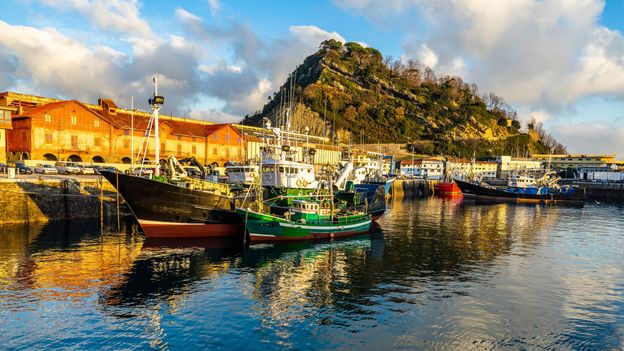
Getaria is home to Restaurante Elkano, currently ranked 30th best restaurant in the world
Though it seems so refined in the hands of Arguinzoniz and his ilk, the art of the asador in the Basque Country is an egalitarian one. This is food for the masses, food for the people. Visit a cider house in spring and witness rack after rack of txuletas being seared over glowing embers, table after table devouring their meaty prize. See Elkano, now one of the most famous restaurants in the world, where chef Aitor Arregui provides a free service for his community, grilling local fishermen’s catches on his outdoor parrilla for them to take home and enjoy.
Elkano, in fact, is the perfect illustration of the living history of fire-powered cooking in Basque land and the interesting links that this intensely local cuisine has to the Basque passion for exploration and movement. The restaurant is named after Juan Sebastián Elcano, a Getaria native who became the first sailor to circumnavigate the world. It was Elcano and his peers, the Basque sailors and fishermen of the 15th and 16th Centuries, who would cook their catches at sea on wood-fired grills, and who brought this practice home. Today, coastal villages such as Getaria, Orio and Bermeo continue to lead the charge of the asadores.
Much later, in the late 19th and early 20th Centuries, a wave of Basque migrants would travel to Argentina, taking with them their txapelas – the classic Basque berets – and their agricultural skills, and sparking a parrilla obsession in that country. Others set sail for the US, adapting grilling techniques they witnessed in the Caribbean and helping create the strong barbecue culture found across the States today. Meanwhile, returning travellers from Latin America sought to recreate the wood-fired boom in the Basque Country in the 1960s, inspiring a resurgence in interest into what had become a home-style kind of cooking, and indeed a progression in terms of fuel and technique as local chefs began to tinker with an age-old tradition.
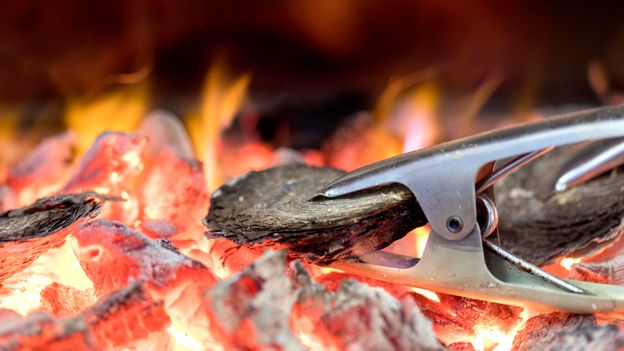
Grilling is one of the most delicious and primal ways of cooking
“Some of the great asadores in the Basque Country began at that time,” said Arzak. “Two of our inland temples of grilling, Casa Julian and Casa Nicolás, both in Tolosa, started using ‘carbon vegetal’, or artisanal charcoal [instead of wood] to grill beef; around the same time in Getaria, Pedro Arregui of Elkano began cooking hake collars and later whole turbot on the charcoal grill. And in all these restaurants, the new generations continue in their footsteps.”
In these times of restricted movement, grilling is a style of cooking that can be enjoyed without travel; trialled and tinkered with at home. Take fire, add meat. Simple. To truly experience the art of the asador, however, a visit to the Basque Country is essential. Call in to a classic rural grill house such as Trinkete Borda in the hills above Irun; to Bedua along an estuary near Zumaia; Casa Julian in Tolosa; Sidreria Zapiain in Astigarriga; Elkano, Kaia-Kaipe and Iribar in friendly Getaria; Laia in beautiful Hondarribia. And of course, Asador Etxebarri, where smoke and flame and the heady beauty of the Basque mountains and the ingredients they produce result in almost alchemical wonder at the hands of Arguinzoniz.
You will also find, of course, that modern-day cooking techniques in the Basque Country have progressed. Most contemporary eateries here now use gas-powered stoves. Plenty of local homes have induction cookers. Elena Arzak and her team of visionaries have bought a 3D printer and are tinkering with edible ink.

But none of these techniques touches the Basque soul and speaks to the local identity like the beauty and simplicity of fire. This is where the Basques came from, and it’s who they still are today.
“The big challenge for me is to maintain the essence of a traditional Basque asador while trying to open it up to the outside world,” Arguinzoniz mused of his pursuit of perfection. “We must always have in mind, and never forget, where we come from. That is the most important thing.”
http://www.bbc.com/travel/story/202...ulture-began?referer=https://www.bbc.com/news
Asador Etxebarri is almost too perfect. Even to those who have dined there, the restaurant occupies something of a mythical place in the mind’s eye. Was it real? Does it actually exist?
The setting seems improbably flawless: Axpe, a tiny Basque village surrounded by green pastures and rugged, mist-shrouded mountains. The restaurant in an old stone farmhouse by a church where bells peal, tendrils of smoke wafting from chimneys into cold air.

The tiny Basque village of Axpe is the unlikely setting for one of the best restaurants in the world
And the food. A meal at Etxebarri is a fire-powered tour de force, an exploration of just how far simple wood and smoke and flame can be taken as a cooking technique when they’re expertly harnessed and applied to the finest ingredients.
You expect to be served a txuleta at Etxebarri: the rib-eye or sirloin steak, grilled over coals and served rare on the bone, that’s so classic as to be a Basque obsession. But what about the caviar, tiny orbs of black roe warmed high above the embers? Or the burrata made by hand every morning, the buffalo milk gently smoked in a wood oven? Or the blushing scarlet prawns, cooked whole, the heat of the fire steaming the sweet meat in its shell?
Self-taught chef Bittor Arguinzoniz tinkers away in his rural hideout, taking a centuries-old gastronomic tradition – the Basque art of the “asador”, the wood-fired grill – and pushing it to an astonishing new level. This is a cuisine Arguinzoniz has made his own, a style of cooking that defines Etxebarri and now, indeed, the entire Basque Country of northern Spain.

It’s also, however, a cuisine of deep tradition, a culture of cooking with fire that stretches back millennia and that still thrives in every corner of this autonomous and culturally independent land. The influence of the grill masters is evident everywhere you look in the Basque Country: in the charred txuletas served in raucous cider houses; in the hake and turbot seared over hot coals at the coastal eateries overlooking the Bay of Biscay; in the flame-kissed staples that appear on menus everywhere from the most upmarket restaurants to the cheapest tapas-like pintxos bars in culinary hotspots such as San Sebastian and Bilbao.
“We are just the hand that carries the produce from the countryside, the garden or the fish market to the table,” said Arguinzoniz, the undisputed master of the parrilla, the grill, and a man of modest understatement. “There is nothing to hide behind with this style of cooking. It has the capacity to surprise you using the simplest ingredients. It can make you fall in love with Basque cuisine, with its local ingredients harvested from this very soil, ingredients that have been used throughout the course of history. It has particular significance right here. It would be difficult, if not impossible, to export, because outside of the Basque Country this significance gets lost.”

Fire. Passion. There’s an indelible link between the two, and that’s certainly evident in the Basque asadores. These grill houses are everything that makes this beautiful land and its people special: the wood the cooks burn is from the Basque region; the beef they sear is from its mountains; the seafood they harvest is from the waters that lap its shores. There's nothing imported or influenced by the outside, a concept that seems quintessentially Basque.
The world, however, is taking notice. Asador Etxebarri is currently rated the third-best restaurant on the planet, according to the 50 Best list. Restaurante Elkano, another asador in the coastal town of Getaria, is ranked number 30. These eateries might be surrounded on the list by contemporaries who use foams and gels and molecular trickery, but for the Basque asadores, restraint is key.
“Cooking over fire seems simple on the surface,” said Elena Arzak, joint head chef of the three-Michelin-starred Restaurante Arzak in San Sebastián, the birthplace of modern Basque cuisine. “But it is really one of the most complex ways of cooking. If you go to any campground in summer, you will see people barbecuing with more or less success. It’s quite another thing, however, to cook food to perfection. And that perfect cooking point is very important to the Basques. It’s an innate sensibility but can always be improved with practice.”

Getaria is home to Restaurante Elkano, currently ranked 30th best restaurant in the world
Though it seems so refined in the hands of Arguinzoniz and his ilk, the art of the asador in the Basque Country is an egalitarian one. This is food for the masses, food for the people. Visit a cider house in spring and witness rack after rack of txuletas being seared over glowing embers, table after table devouring their meaty prize. See Elkano, now one of the most famous restaurants in the world, where chef Aitor Arregui provides a free service for his community, grilling local fishermen’s catches on his outdoor parrilla for them to take home and enjoy.
Elkano, in fact, is the perfect illustration of the living history of fire-powered cooking in Basque land and the interesting links that this intensely local cuisine has to the Basque passion for exploration and movement. The restaurant is named after Juan Sebastián Elcano, a Getaria native who became the first sailor to circumnavigate the world. It was Elcano and his peers, the Basque sailors and fishermen of the 15th and 16th Centuries, who would cook their catches at sea on wood-fired grills, and who brought this practice home. Today, coastal villages such as Getaria, Orio and Bermeo continue to lead the charge of the asadores.
Much later, in the late 19th and early 20th Centuries, a wave of Basque migrants would travel to Argentina, taking with them their txapelas – the classic Basque berets – and their agricultural skills, and sparking a parrilla obsession in that country. Others set sail for the US, adapting grilling techniques they witnessed in the Caribbean and helping create the strong barbecue culture found across the States today. Meanwhile, returning travellers from Latin America sought to recreate the wood-fired boom in the Basque Country in the 1960s, inspiring a resurgence in interest into what had become a home-style kind of cooking, and indeed a progression in terms of fuel and technique as local chefs began to tinker with an age-old tradition.

Grilling is one of the most delicious and primal ways of cooking
“Some of the great asadores in the Basque Country began at that time,” said Arzak. “Two of our inland temples of grilling, Casa Julian and Casa Nicolás, both in Tolosa, started using ‘carbon vegetal’, or artisanal charcoal [instead of wood] to grill beef; around the same time in Getaria, Pedro Arregui of Elkano began cooking hake collars and later whole turbot on the charcoal grill. And in all these restaurants, the new generations continue in their footsteps.”
In these times of restricted movement, grilling is a style of cooking that can be enjoyed without travel; trialled and tinkered with at home. Take fire, add meat. Simple. To truly experience the art of the asador, however, a visit to the Basque Country is essential. Call in to a classic rural grill house such as Trinkete Borda in the hills above Irun; to Bedua along an estuary near Zumaia; Casa Julian in Tolosa; Sidreria Zapiain in Astigarriga; Elkano, Kaia-Kaipe and Iribar in friendly Getaria; Laia in beautiful Hondarribia. And of course, Asador Etxebarri, where smoke and flame and the heady beauty of the Basque mountains and the ingredients they produce result in almost alchemical wonder at the hands of Arguinzoniz.
You will also find, of course, that modern-day cooking techniques in the Basque Country have progressed. Most contemporary eateries here now use gas-powered stoves. Plenty of local homes have induction cookers. Elena Arzak and her team of visionaries have bought a 3D printer and are tinkering with edible ink.

But none of these techniques touches the Basque soul and speaks to the local identity like the beauty and simplicity of fire. This is where the Basques came from, and it’s who they still are today.
“The big challenge for me is to maintain the essence of a traditional Basque asador while trying to open it up to the outside world,” Arguinzoniz mused of his pursuit of perfection. “We must always have in mind, and never forget, where we come from. That is the most important thing.”
http://www.bbc.com/travel/story/202...ulture-began?referer=https://www.bbc.com/news


